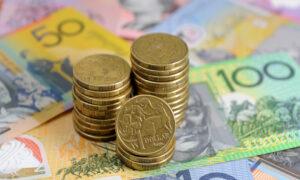The Australian economy is losing its sheen and tipped to post another weak growth result in the December quarter national accounts.
The Australian Bureau of Statistics is due to release the nation’s economic report card on Wednesday.
Slowing growth is an expected consequence of higher interest rates and inflationary pressures, with the September quarter recording a modest 0.2 per cent lift and coming in below economists’ expectations.
National Australia Bank is pencilling in another lacklustre 0.2 per cent quarterly GDP print, to be up 1.4 per cent over the year.
With the exception of the pandemic, this would be the lowest annual growth rate since 2000.
Economists at the bank, Alan Oster, Gareth Spence and Brody Viney, said the slowdown in household spending would be the main reason for weak growth, much like in September.
“That said, partial information this week suggests dwelling investment will also weigh,” they wrote in a national accounts preview.
Countering those areas of weakness should be business investment, which appeared to have been buoyed by non-residential building.
A result in line with NAB forecasts would be pretty close to where the Reserve Bank expects economic activity to be tracking for the December quarter.
“But the outlook for 2024 and 2025 will be increasingly important with policy in restrictive territory and the bank still hoping to hold onto as much of the labour market gains over recent years as possible,” Mr Oster and his colleagues said.
Treasurer Jim Chalmers has also warned “quite weak” economic growth is expected this week.
“The soft landing we seek at home and in the global economy is assumed but not assured,” he told his international counterparts at G20 talks last week.
A bunch of other key data releases are scheduled this week, starting on Monday with January building approvals data, a marker of upcoming construction activity.
On Tuesday, the ABS will release balance of payments and government finance data for the December quarter.
Lending indicators for the month of January are due from the bureau on Thursday, as well as international trade in goods for the same time period.
The Australian share market is at an all-time high amid optimism flowing from a positive company earnings season, and hope for interest rate cuts.
The benchmark S&P/ASX200 index on Friday finished up 46.9 points, or 0.61 per cent, to 7745.6, its first close above 7700.
The broader All Ordinaries finished above 8000 for the first time, gaining 47.6 points, or 0.6 per cent, to close at 8007.1.







